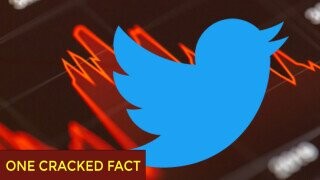When Twitter Went Public, Confused Investors Bought The Wrong Stock

We're living in the era of meme investing, when stock prices suddenly balloon for reasons unconnected with how much the company's worth. The era started approximately as soon as the stock market began. It kicked into high gear during the '90s tech boom, and it came back again during the next tech boom, the rise of social media.
In November 2013, Twitter was about to go public for the first time, and its shares would sell for about $45 at the end of its first trading day. One month before that, though, investors thought they spotted some shares in the wild. Twitter was going to trade under the code TWTR, and they saw shares for sale using the code TWTRQ.
Now, those are different codes of course. But the investors thought—correctly—that the Q was just something authorities stick on the end when there's something funny about the stock. That funny thing, they guessed, was that the stock was being listed too early, which was why they were able to snap up shares for less than a penny.
Don't Miss
The stock started the day at less than a penny, anyway. In a few hours, it rose 1,800 percent. A few investors figured they had suddenly become very rich.
TWTRQ was not actually Twitter, as you've already guessed. It was a company called Tweeter Audio and Video, and that Q on the end of the code was supposed to warn investors that this was a bankrupt company whose stock was worthless.
As for the real Twitter stock, if any of you are wondering how rich you'd be if you'd bought in on day one, well, let's take a look and see. It seems that, factoring in inflation, if you'd held on to Twitter stock for the past eight years, you would have actually ... lost money. Huh. Hey, not all tech stocks can be winners.
This fact came from the One Cracked Fact newsletter. Want more like this, straight from your email inbox, without any ads or popups? Join here:
For more stupid stock stories, check out:
A Random British Dude Crashed The Stock Market From His Parents' House
A Stock Trading Glitch Costs $10 Million Per Minute
5 Hilarious Stories Of Stock Prices Driven By Stupidity
Follow Ryan Menezes on Twitter for more stuff no one should see.
